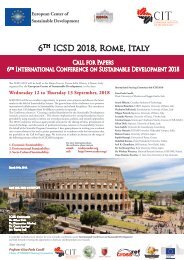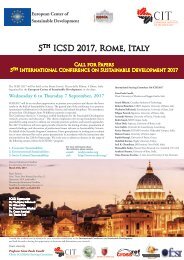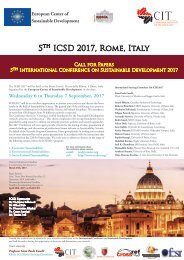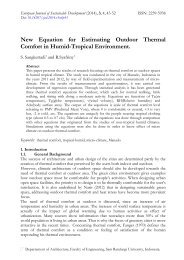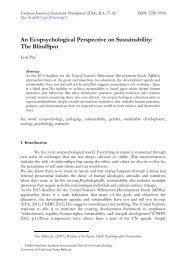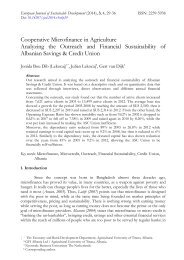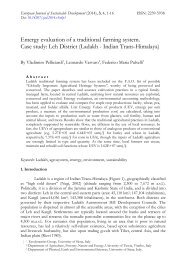Study of particulate matters pollution related with meteorological factors for a city from South-Central of Romania
Reducing the effects of climate change and air pollution is at present a global priority. Development and implementation of effective policies in order to achieve these reductions is a challenge that requires a good understanding of the underlying phenomena of climate change and air pollution. This paper aims to highlight the seasonal variation of PM10 concentration in Pitesti city depending on major meteorological factors (temperature, intensity of solar radiation, and relative humidity). The applied methodology consists in statistical processing, using specialized software, of a database containing historical records of concentration values of this pollutant and of meteorological parameters recorded concurrently. The results of processing a series of approximately 30000 values recorded from 2008 to 2011 indicate the fact that in every season (winter,spring, summer, and autumn) the concentration of PM10 varies according to a sixth degree polynomial function, whose variable is one of the considered meteorological factors. The mathematical relationship that best approximates the variation of average PM10 concentration in relation with the three meteorological factors is by the form of a multiple linear regression equation. Keywords: air pollution and human health, particulate matters related with meteorological factors, statistical analysis
Reducing the effects of climate change and air pollution is at present a global priority. Development and implementation of effective policies in order to achieve these reductions is a challenge that requires a good understanding of the underlying phenomena of climate change and air pollution. This paper aims to highlight the seasonal variation of PM10 concentration in Pitesti city depending on major meteorological factors (temperature, intensity of solar radiation, and relative humidity). The applied methodology consists in statistical processing, using specialized software, of a database containing historical records of concentration values of this pollutant and of meteorological parameters recorded concurrently. The results of processing a series of approximately 30000 values recorded from 2008 to 2011 indicate the fact that in every season (winter,spring, summer, and autumn) the concentration of PM10 varies according to a sixth degree polynomial function, whose variable is one of the considered meteorological factors. The mathematical relationship that best approximates the variation of average PM10 concentration in relation with the three meteorological factors is by the form of a multiple linear regression equation.
Keywords: air pollution and human health, particulate matters related with meteorological factors, statistical analysis
Create successful ePaper yourself
Turn your PDF publications into a flip-book with our unique Google optimized e-Paper software.
G. Mitran, S. Ilie 27<br />
intensity <strong>of</strong> solar radiation, and relative humidity, specific to each season. Also, the<br />
amount <strong>of</strong> PM 10 variation was evidenced in relation to all three <strong>meteorological</strong><br />
parameters specified above, expressed in the <strong>for</strong>m <strong>of</strong> multiple linear regression<br />
equations. The correlation between measured data and those estimated based on<br />
identified regression functions is strong <strong>for</strong> winter and spring seasons and moderate <strong>for</strong><br />
summer and autumn seasons.<br />
The interpretation <strong>of</strong> values <strong>for</strong> correlation coefficients leads to the following<br />
conclusion: by knowing this variation functions, can be estimated the PM 10<br />
concentration in the atmosphere <strong>of</strong> Pitesti <strong>city</strong> at a future moment in time <strong>for</strong> which are<br />
known the prognoses on the values <strong>of</strong> the <strong>meteorological</strong> parameters specific to studied<br />
area.<br />
The methodology proposed and validated through the case study in this paper<br />
represents an effective tool <strong>for</strong> determining the quantity <strong>of</strong> PM 10 in the atmosphere, in<br />
the assumption that the amount <strong>of</strong> PM 10 emitted remains constant in each hour <strong>of</strong> the<br />
average day associated <strong>with</strong> each season and in the assumption that are known the values<br />
<strong>of</strong> the <strong>meteorological</strong> parameters - temperature, intensity <strong>of</strong> solar radiation, and relative<br />
humidity.<br />
Applying the same methodology can be analyzed the variations <strong>of</strong> other pollutants in<br />
relation to the <strong>meteorological</strong> parameters used in this case study. Also, <strong>for</strong> advanced<br />
analysis, which more faithfully reflects the actual phenomena <strong>of</strong> dispersion and transport<br />
<strong>of</strong> pollutants in the atmosphere, can be considered more <strong>meteorological</strong> parameters. In<br />
the future the authors intend to extend this type <strong>of</strong> analysis <strong>for</strong> a larger study area<br />
(metropolitan area, county area etc.).<br />
Acknowledgement<br />
This work was funded through the project PERFORM - Sustainable per<strong>for</strong>mance in<br />
doctoral and postdoctoral research, ID: POSDRU/159/1.5/S/138963, co-financed by the<br />
European Social Fund – Investing in People, <strong>with</strong>in the Sectoral Operational Programme<br />
Human Resources Development 2007-2013.<br />
References<br />
Carnevale, C., Pisoni, E., & Volta, M. (2008). A multi-objective problem to select optimal PM 10 control<br />
policies. In: Borrego, C. ,& Miranda, A.I. Air Pollution Modeling and Its Application XIX. Springer<br />
Netherlands.<br />
Donaldson, K., Gilmour, M.I., & MacNee, W. (2000). Asthma and PM 10 . Respiratory Research. 1 (1).<br />
Dusa, A. (2007). Simple linear regression. University <strong>of</strong> Bucharest, Bucharest.<br />
European Environment Agency. (2012). European Union emission inventory report 1990–2010 under the UNECE<br />
Convention on Long-range Transboundary Air Pollution (LRTAP). European Environment Agency<br />
Technical Report, Publications Office <strong>of</strong> the European Union.<br />
Ministry <strong>of</strong> Environment and Forests, National Environmental Protection Agency. (2012). National Report on<br />
the State <strong>of</strong> the Environment 2011. Bucharest, <strong>Romania</strong><br />
N., Fernando, H., Runger, G., Hyde, P., Hedquist, B., Anderson, J., Bannister, W., & Johnson, W. (2012).<br />
Relationship between <strong>particulate</strong> matter and childhood asthma – basis <strong>of</strong> a future warning system<br />
<strong>for</strong> central Phoenix. Atmospheric Chemistry and Physics, 12, 2479-2490.<br />
© 2014 The Authors. Journal Compilation © 2014 European Center <strong>of</strong> Sustainable Development.




